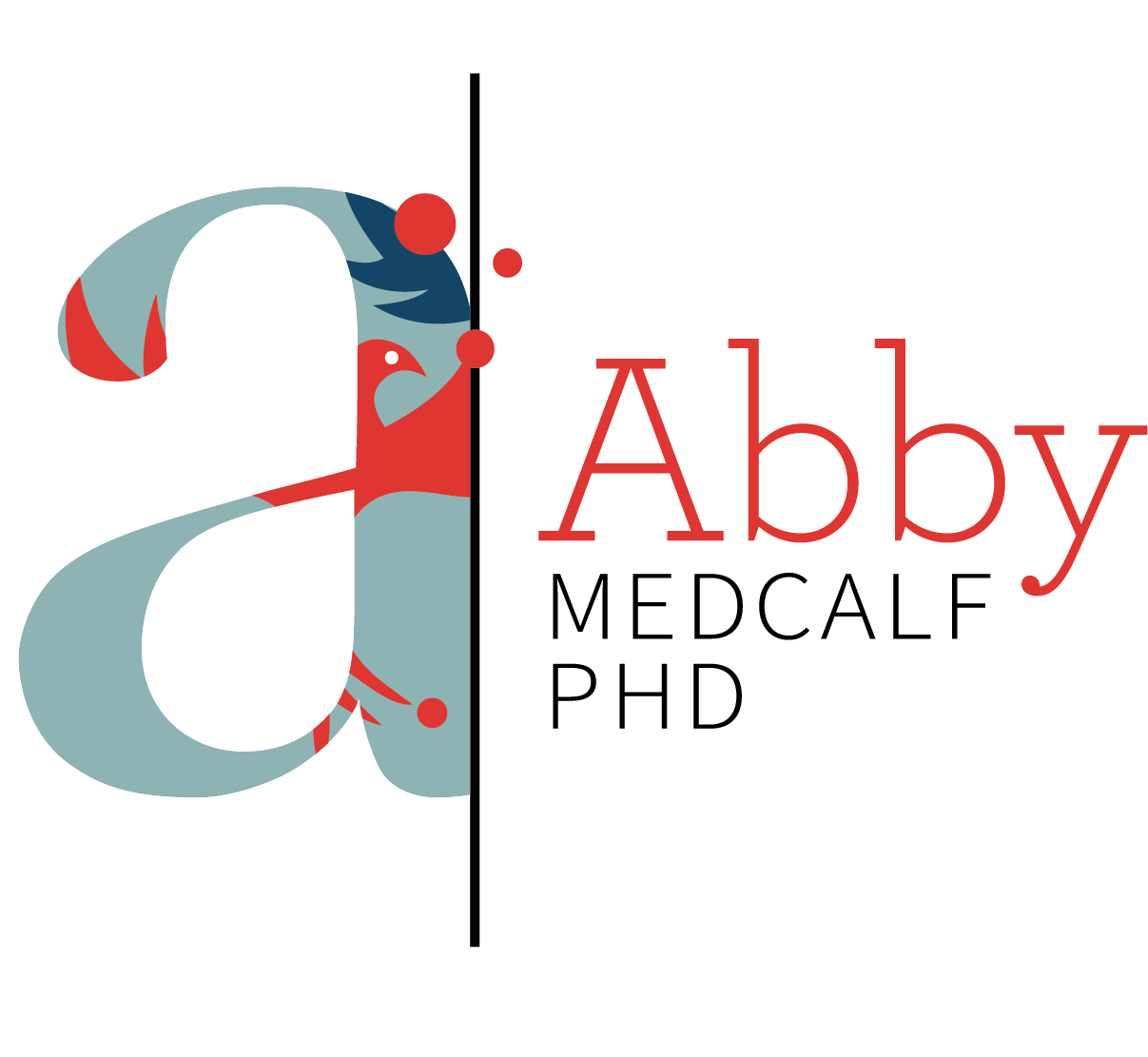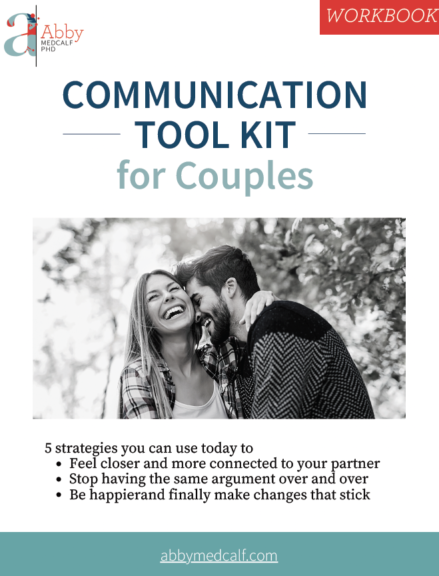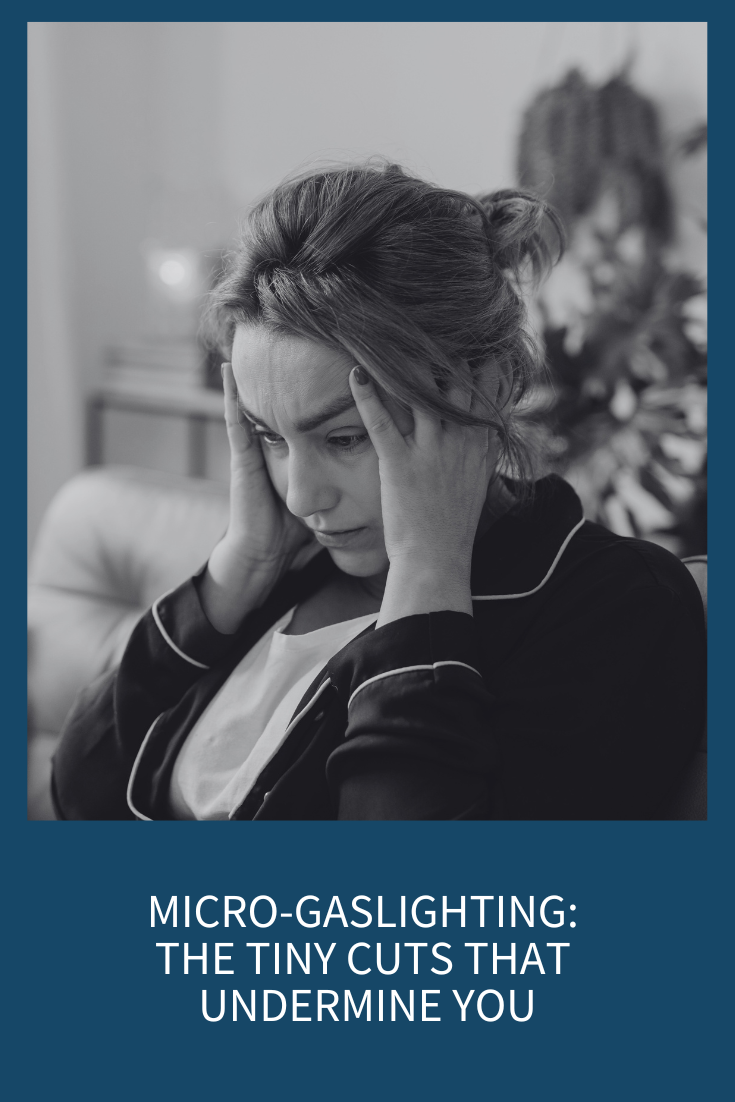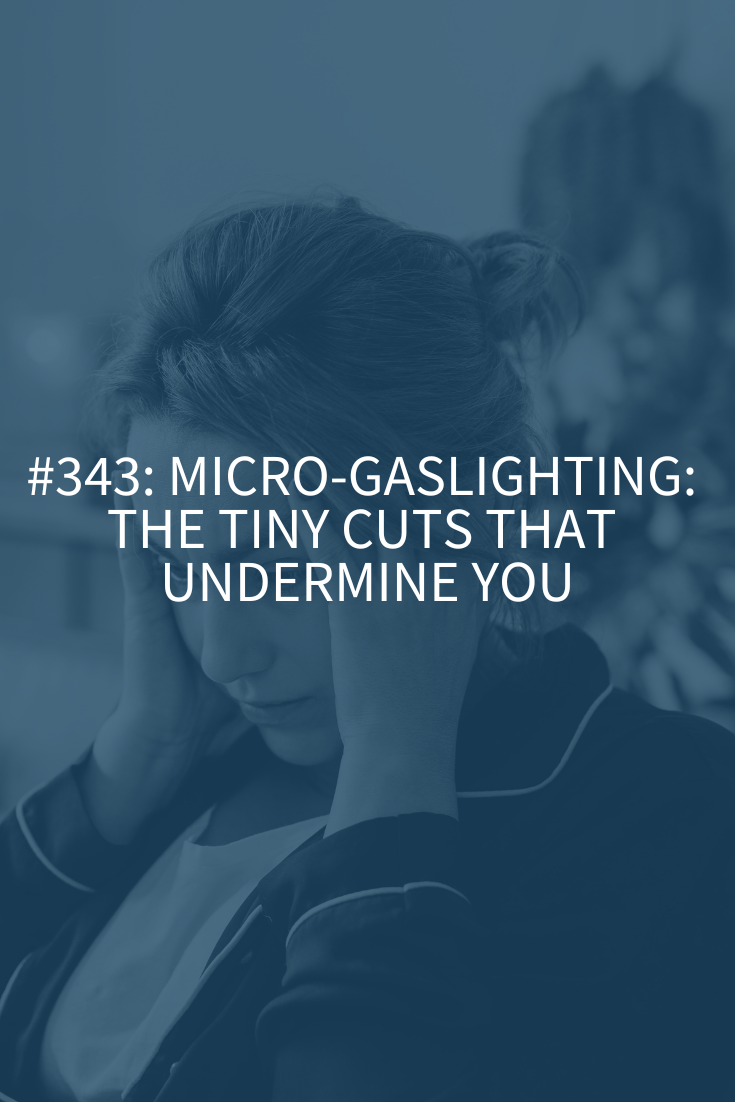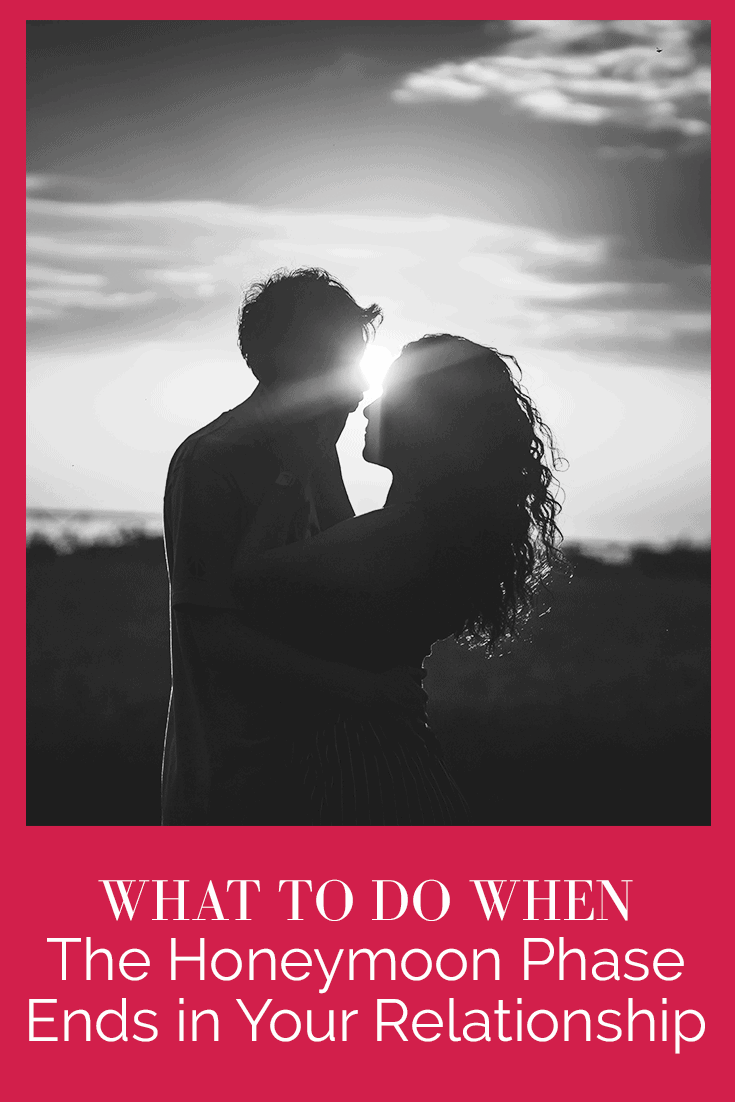
What to do when the honeymoon phase ends in your relationship? I’ve got your answer: Be happy because it means you’ve moved on to better things! The honeymoon phase, where everything feels amazing, is due to a biochemical process called limerence and this is like the best push-up bra in the world: It looks great in the beginning but, eventually, everyone’s going to figure out what’s real.
The experts say that the honeymoon phase only lasts 18 to 24 months but if you want a happy and connected relationship that lasts 18 to 24 years and more, read on!
What the heck is limerance, Abby?
The word “limerence” was first coined in 1979 by psychologist Dorothy Tennov in her book, Love and Limerance: The Experience of Being in Love.
She’s clear that limerence shouldn’t be confused with love or lust and gives some very specific things to look for to know that limerence is happening. Here are the biggies (that might sound familiar):
- Feeling totally obsessed! You can’t eat, you can’t sleep, you can’t concentrate! All you can think about is them.
- Needing to feel it back. Not only are you obsessed with them, you want them to be just as obsessed with you. You’re utterly despondent if they don’t reciprocate and your feet don’t touch the ground when they do.
- They can do no wrong. You end up putting them on a pedestal and have a largely irrational positive view of everything they do.
- You want them by your side. You feel the pain when you can’t lay your eyes on them.
Biological Anthropologist, Helen Fisher, calls the honeymoon phase the “Infatuation Period.” In her book, Anatomy of Love: A Natural History of Mating, Marriage, and Why We Stray, she talks about the increases of norepinephrine and dopamine levels in the brain. I talked about these biochemical reactions last year when I talked about how to find the spark again, but let me give you a Reader’s Digest version here.
Dr. Fisher identified three different brain systems in relationships, which I call the Relationship Brain Constellation. I call it a constellation because all three work together. One isn’t more important than another in creating that connection and satisfaction.
Each star of the constellation has important brain chemicals associated with it.
The three stars or phases she’s identified are
- Sex and lust (here’s our honeymoon phase)
- Your feelings of attachment and trust
- Being in love and romance
What’s Happening to You in the Honeymoon Phase
The chemical that you need to focus on in relation to your sex drive is the hormone, testosterone. In general, the more testosterone you’ve got, the more sex you want.
Testosterone starts to slowly decrease in men, typically after age 30. Besides aging, weight gain, decreased movement, some medications and emotional or physical stress can all cause lower levels of testosterone.
What many people don’t realize is that women also have testosterone. Although women’s testosterone is much lower than men’s, it’s still an important hormone related to sex and mood. For women, testosterone decreases by about half by the time we’re 40. This directly affects sexual desire and satisfaction but can also be a contributing factor to depression and anxiety. For both men and women, a decreased sex drive tends to be related to stress, lack of movement, relationship issues, and tiredness.
Stress the biggest culprit because, when you’re stressed, you’re releasing other hormones such as cortisol and epinephrine (which is also known as adrenaline). These are the hormones preparing you to fight or flee. As you might imagine, if a tiger was jumping out to eat you, sex should be the last thing on your mind. Hence, lower sex drive.
So, what do you do to create more testosterone and have a higher libido and more satisfying sex life? Competitive and/or aerobic exercise is the winner here for a few reasons. First, competitive exercise increases testosterone levels in the body and helps keep them on an even keel when you do it consistently.
Second, aerobic exercise is the best antidote for stress. Some studies show it’s more effective than medication. Exercise burns off those stress hormones, cortisol and adrenaline while pumping up the production of endorphins and enkephalins. Endorphins and enkephalins are neurotransmitters (a fancy way of saying they’re your brain’s chemical messengers) that help relieve pain, anxiety and stress. Basically, these chemicals are your brain’s natural Valium. Decreased stress equals hotter sex.
Lastly, exercise also helps with sleep. Remember, being tired is one of the other key factors that reduces sex drive. By the way, some studies have shown that having sex raises testosterone levels, so the more sex you have, the more sex you you’ll want.
Let’s Get Back to Those Stages:
As I mentioned earlier, Fisher gives this honeymoon phase about two years (in some cases three, but that’s pushing it) because, inevitably, you move into the attachment stage when there’s an increase in different biochemicals like vasopressin and oxytocin. When this happens, those other hormones return to normal, and the so-called honeymoon phase ends.
So, in some ways, it’s a good thing when the honeymoon or infatuation phase ends because it means you’ve deepened your attachment to your partner and come to a deepening emotional intimacy place in the relationship.
This second level of your relationship, the attachment and trust star of the Relationship Brain Constellation, is huge because this is where the true bonding happens. This is where emotional closeness deepens because this phase is ruled by oxytocin. Oxytocin is basically a bonding hormone, most famously produced when women have babies. However, you can create it all the time with something a lot simpler than having a baby; you can create it easily with touch. Get in the habit of touching your partner often. This could mean holding hands, spooning at night, cuddling on the couch, giving a foot massage or any other way you can pump up the touch volume in your relationship.
Having sex, but especially an orgasm, is the way to release the most oxytocin and build feelings of attachment and trust quickly. Outside of the actual act of sex, men get the most oxytocin when they kiss, and women get the most when they hold hands. So, make sure you’re doing more of what your partner wants when it comes to the oxytocin build.
When you trust your partner, the sex can get REALLY good. You’re willing to try new things, you’re not so worried about looking stupid or embarrassing yourself. You’ll go for it because you trust that it’s a safe space.
Hot sex is messy: you might choke (and even throw up a little) giving a blow job; you might see some poop if you try anal sex; you could find out the hard way that the living room coffee table doesn’t support your weight when you try to have sex on it; you might find that you have no dirty talk game or that when you scream out “eat my pussy!” your partner pulls back and then you feel embarrassed.
If you have missionary sex, every Tuesday at 8:00, only in your bed, for 20 years I’m going to go out on a limb and say there’s no way you’ve got erotic spark happening! By definition, an erotic sex life with your long-term partner is going to mean bringing something new in.
When we try new things, they don’t always work. We’re putting our fragile egos on the line and we need to trust that our partner will be there with us as we take risks.
But I will say this, the research says that most couples who get to the attachment phase, have less sex than those in the infatuation stage.
Once that honeymoon or infatuation phase ends and those hormone levels drop, you’re either going to move to the Attachment Phase or you’re going to break up. But here’s the deal:
If you stay together, you want to make sure it’s for the right reasons. If there’s any fear involved (“Well, I want to have babies and I’m already 35, so I’m going to stay” or “I’ve already invested all this time, I don’t want to start all over!”) then you’re going to be in trouble. You can’t base a love relationship on a fearful premise, so you’re going to need to do some work so you come from a love-based place moving forward.
If you break up at this point because you’re on the hunt for the excitement and sex of a “new” relationship, just know that this too shall pass. In other words, you will inevitably end up back in the same place.
For years in my own life I was what you’d call a “Serial Monogamist.” I loved being in love initially. My early relationships had an 18-month expiration date (this didn’t become apparent until I finally did some serious therapy around age 30 to figure out what I was doing).
I would be with a man, profess my love, move in, give him all of my adoration and attention for about a year and a half, and then I would abruptly “not feel it anymore” and leave. I am not proud to say that I left a trail of broken hearts in my wake. I can only say that, to my credit, I was always straight up in the beginning about having no interest in getting married. But, inevitably, we’d be living together and he was in love (who wouldn’t be with all that attention and sex?) and would start talking future. This was my wake up call to get the heck out of Dodge.
It wasn’t until therapy, where I learned about my avoidant attachment style, that I started to figure out what the problem really was.
I’ll tell you something funny (as in God has a sense of humor and maybe isn’t so benevolent, not funny like watching Chris Rock do stand up): If you break up instead of staying together at this point, your heart might feel broken. If that happens, your hormones will change again and you’ll get another dopamine boost! And guess what? You might forget all the good reasons you broke up and end up back in bed together! (This dopamine boost is also why you have no interest in eating and lose weight at the very beginning or end of a relationship).
As Dua Lipa says in that song we can’t get out of our heads, “If you’re under him, you ain’t getting over him.” This is why. The cycle goes round and round so the key is not to give in to your chemistry. If you push past it, you’ll eventually move past the infatuation and romanticizing.
Having said all this about moving in order from phase to phase, Fisher cautions thinking of all this on a linear timeline because you can flow back and forth between stages. For example, you might start with being best friends with someone (so in the attachment phase) and then develop sexual feelings for them and move into that honeymoon or infatuation phase even though you’ve known them for years!
A Word About Affairs
In affairs (even those that go long term), you don’t move into the attachment phase. That’s why the limerence or honeymoon phase keeps going! You don’t move in together or deal with any of the day-to-day things that bring a relationship down, so you’ve just got these “stolen moments” and all the chemicals in the honeymoon phase keep going!
So, Now What, Abby?
Now that you know all the why, let’s get to the what. What do you do when that honeymoon phase ends? Focus on all the ways to be attached and then on how you can move ultimately into the feeling “in love” and romantic phase of being with your partner, which is THE BEST FEELING EVER!
This is that time in a relationship where there’s that knowing that the other person has your back no matter what. Where you might not have the butterflies and nervous energy of that honeymoon phase, but that’s a good thing. You feel confident and satisfied. You’re deepening your level of closeness and intimacy which actually leads to better sex, more satisfaction overall and longevity (in a good way).
Tips:
1. Avoid the bad stuff.
One of the best things you can do to move your relationship forward is not screw up. I’ve talked before about how you get more bang for your buck in your relationship not by doing that wonderful thing, but by not doing the annoying thing!
I’ve talked about the negativity effect before because it’s so key to a satisfied, happy life.
Basically, the negativity effect is your brain’s tendency to respond more strongly to negative events and emotions than to positive ones. In the end, the bad stuff is way stronger that the good stuff.
Research has shown that a negative event (like your partner blowing up at you about the Visa bill) has at least three times the impact of a positive event (like when your partner told you that you looked sexy as hell in that shirt).
In their book, The Power of Bad: How the Negativity Effect Rules Us and How We Can Rule It, authors John Tierney and Roy Baumeister talk about something called “The Rule of Four.” Basically, four good things need to happen to overcome one bad thing. Now, this research has been around awhile. Barbara Fredrickson’s research pointed to something she called “the Positivity Ratio,” which said this same thing except the numbers were 3:1. And marriage guru and researcher, John Gottman, says the ratio in romantic relationships is 5:1 (likely because of our higher expectations of a love partner versus what you expect at work from Bob in Accounting).
So, the bottom line: focus more on not screwing up!
2. Add Novelty
Avoiding boredom is key to a happy, connected relationship. We’re not trying to go back to the Honeymoon Phase, but we are trying to deepen our connection, trust and romance.
The chemical you need to focus on to create that “in love” feeling is another neurotransmitter called dopamine. Dopamine is one of the main components in the brain’s pleasure center and studies have shown that dopamine stimulates romantic love.
How do you get that dopamine flowing to get that in love, romantic feeling? Research shows that trying new things or novelty triggers the release of dopamine in the brain. I like to say, “Happy couples do new things together.”
When you have a new experience your reward system is activated and floods with dopamine and other neurotransmitters. These are the same brain circuits that fire when you first fall in love. Numerous research studies have shown that the more novelty you introduce, the closer a couple gets.
I want you to make a plan to do something new together.
I want you to choose something neither of you has ever done before so you can learn something fresh and different together. You can go to an ashram and learn to meditate, learn to ice skate if neither of you knows how, take a metal-smithing class, do a walking tour in a nearby city or try that new Ethiopian Restaurant you’ve heard great things about. No matter what you choose, make it something where you’re both on the same learning curve so you can create something new together.
Related to this I want to say that you need to miss one another. Stop with the constant texting/contact all day. Be where you are in a moment and let your partner be where they are. Create some distance so you can create some connection.
3. Let’s talk about physical intimacy
Fisher distinguishes lust from infatuation. Feeling lust doesn’t mean you’re in love. Some couples start out with lust and then move into the infatuation or honeymoon phase. And we all know that you can fall in love without even having sex (hello internet dating and long-distance relationships).
But when you do fall in love, your sex drive is triggered. One day you feel “in love” and the next everything your new partner does is sexually attractive (“I find it so sexy when he’s all smelly from working out”).
The new high levels of dopamine in your brain have you thinking non-stop about sex. The key is to realize that you can leave the honeymoon phase with your desire intact (I can tell you this is true from personal experience – I find my man super sexy).
BUT, you’ve got to make this a priority. There are so many ways you can experiment with your sex life and it’s important to understand that leaving the honeymoon phase doesn’t have to be the end of anything that’s positive.
As a matter of fact, I think leaving this stage and all the lies of limerence is a good thing. Deepening trust and attachment can still mean a fun, spontaneous life together. But, instead of that push-up bra with nothing to back it up, you find that those babies are very real! (Hey, I’ve got big boobs, I get focused on them – but you get the analogy)!
This is all about creating that bonding hormone, Oxytocin as well as another hormone called Vasopressin. These hormones make us feel calm, connected and secure and are linked to behaviors that produce long-term, monogamous relationships.
Even if you’re not having sex (or as much as one of you would like), make it a point to touch with as much skin as possible, as often as possible.
My man John Gottman (he’s not really my man, he’s just a bomb marriage researcher that I quote all the time) studied the amount of time it takes for oxytocin to be released by hugging and kissing. He clocked it at 20 seconds for a hug and 6 seconds for a kiss.
Gottman says, “A six-second kiss is a kiss with potential.”
So, make it a priority to get in a 20-second hug and at least a six-second kiss, every day.
4. Attention and Intention
Your relationship and your sex life are fluid. You can move between the phases but you’ve got to bring attention and intention to your relationship every single day. I say it a lot (because it’s true). Great relationships aren’t built in a day. Great relationships are built daily. Make your partner a priority and set a positive intention with them, often.
There is no greater gift you can give your partner than your full attention. Put down the electronics, stop phubbing and start connecting.
5. Create a Couples Ritual
Create a ritual that’s just for the two of you. It could be anything:
- Couples happy hour
- Morning gratitude over coffee
- Sneaking a cigarette together right before bed
- If you’re not sure what to talk about, try the “36 Questions that Lead to Love”
Wrap Up:
Anthropologists have now found evidence of romantic love in 170 societies. And not in one culture where they looked, did they not find it. Romantic love is a wonderful thing and everyone deserves it. You deserve it. It’s not as far away as you think so let’s put some thought and attention to this awesome component of a happy, fulfilled life.
